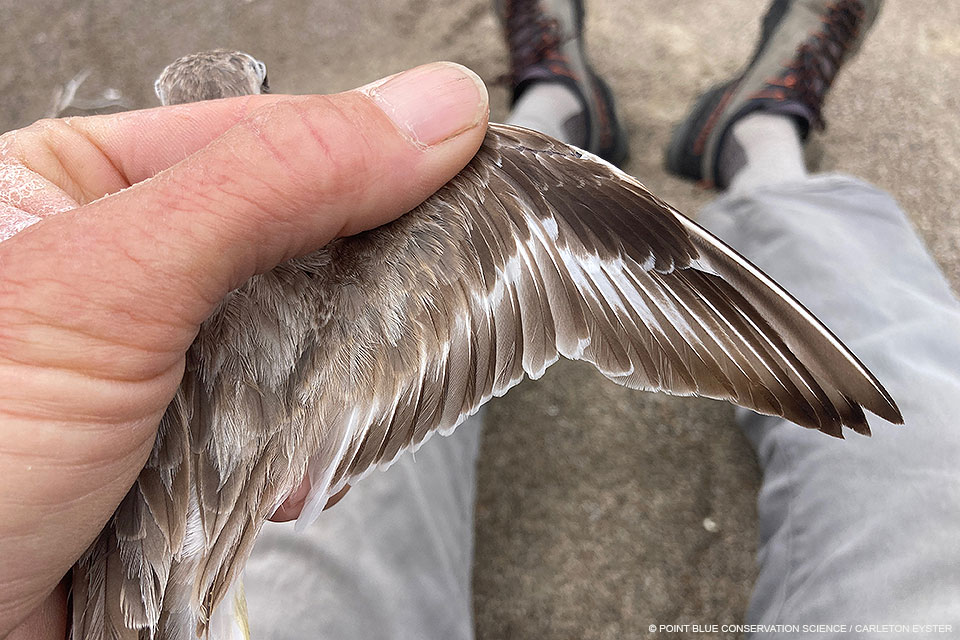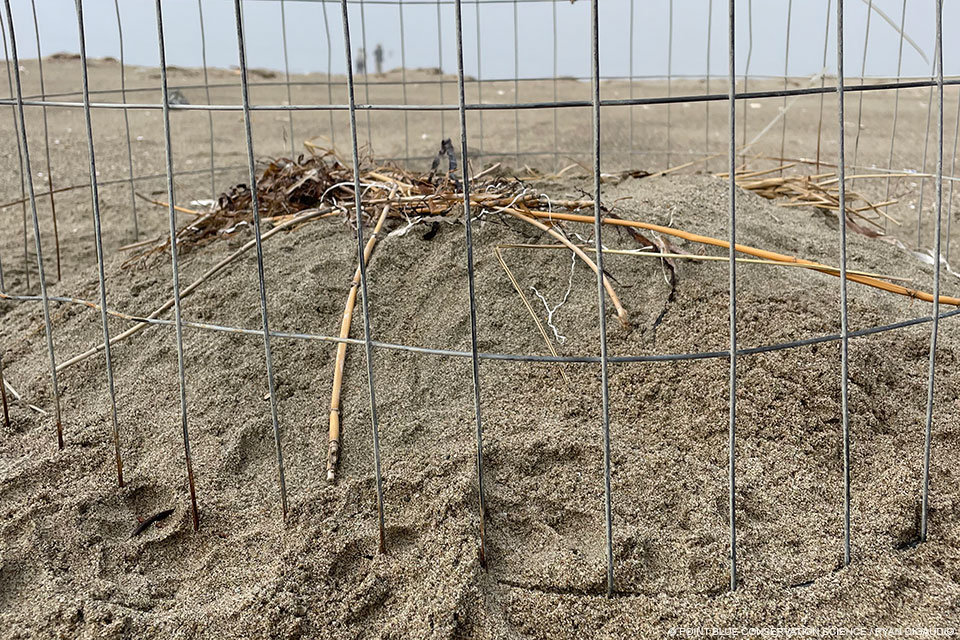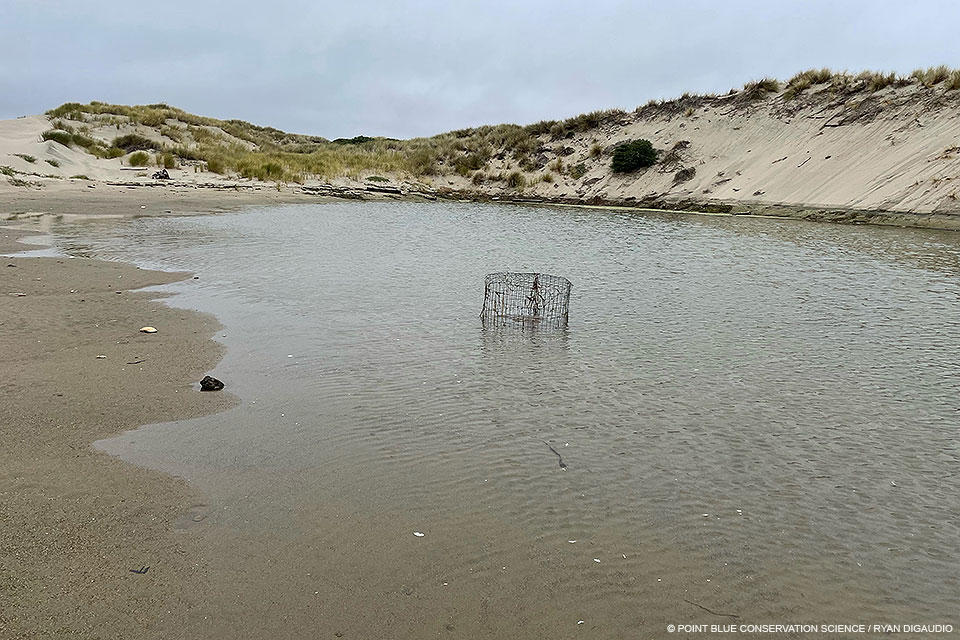Overview
Hello Ploverites!
With the King tides this past week, many of the remaining active western snowy plover nests were in danger of being washed over by high tides. One new nest on Limantour Beach unfortunately was completely washed over by high tides; the nest was in a location where the tide was so high, it nearly covered the top of the mini-exclosure! Photos are below. The breeding pair has been spotted but we have not yet found any scrapes or signs that they are nesting again. There is still some time before the season ends!
The breeding snowy plover pair mentioned previously is affectionately known as the King and Queen of Limantour—these are av:ww male and av:bg female. The female hatched on May 21, 2017, on the beach between the two parking lots on Limantour Beach. The male hatched on July 25, 2018, south of North Beach parking lot. Since they hatched, both adult plovers spend winters on Limantour Beach, in addition to nesting on Limantour since they hatched! They have been long time pairs since 2019 and have had up to two successful nests each season. So far during the 2022 breeding season, av:bg female has had three known nests, two of which have been successfully with av:ww male.
Here are updates organized by beach sites:
Kehoe (K):
The one active nest at this site was abandoned last week, very likely due to winds that caused eggs to roll out of the nest cup and were probably depredated by common ravens. The nest location was poorly chosen—the breeding pair laid their eggs on a sloped dune. We continue to monitor this pair to see if they will lay one more nest before the season ends.
Abbotts Lagoon Restoration Area (RA):
There are currently no active nests within the RA, but it appears that several broods (i.e., males with chicks) are utilizing the expansive restoration area near the lagoon mouth to protect the chicks. This area is notoriously known as "Abbotts Triangle," as it is expansive native dunes and it is easy to lose track of plovers during surveys.
Abbotts Lagoon to North Beach parking lot (NP):
There are two active nests on this site, near the North Beach parking lot. There are at least eight active broods on this stretch. One brood is due to fledge two chicks this weekend.
North Beach (NB):
There hasn't been any breeding activity between North Beach and South Beach parking lots since the start of the season.
South Beach (SB):
No breeding activity has been observed at this site this year.
Limantour (L):
We lost the only active nest to the high tides this week. We are hopeful that the breeding pair will try to establish one last nest before the end of the season. One brood of two chicks remains active and will fledge at the end of the month.
If you have any questions, please feel free to contact Matt Lau, the park's Snowy Plover Ecologist, via email.
CURRENT STATS:
- 30 total nests this season
- 2 active nest
- 18 hatched
- 10 failed nests
- 22–25 chicks on the beach!
- 6 chicks confirmed fledged
 © Point Blue Conservation Science / Carleton Eyster
© Point Blue Conservation Science / Carleton Eyster
Point Blue biologist, Carleton Eyster, examines the molt patterns of a second-year adult snowy plover, during banding efforts. Photo credit: Carleton Eyster
 © Point Blue Conservation Science / Ryan DiGaudio
© Point Blue Conservation Science / Ryan DiGaudio
Point Blue biologist, Ryan DiGaudio, elevated this vulnerable Limantour nest by using sandbags and piles of sand to build up a mound, remaking a nest cup and placing the eggs at the top. This is an infrequent and extreme action we take when nests are vulnerable to tidal overwash and must be approved by the U.S. Fish and Wildlife Service. The adult snowy plovers placed their nest in a low bowl on the beach that frequently becomes inundated with ocean water during high tide events.
 © Point Blue Conservation Science / Ryan DiGaudio
© Point Blue Conservation Science / Ryan DiGaudio
A photo of the above nest, completely inundated by the seven-foot tides on July 12 and July 13, 2022. You can see the waterline on the far dune. The nest was completely washed over and the breeding adult pair was later found farther down the beach.
The National Park Service shall not be held liable for improper or incorrect use of the data described and/or contained herein. These data and related graphics (if available) are not legal documents and are not intended to be used as such. The information contained in these data is dynamic and may change over time. The National Park Service gives no warranty, expressed or implied, as to the accuracy, reliability, or completeness of these data. For more information: https://www.nps.gov/disclaimer.htm
